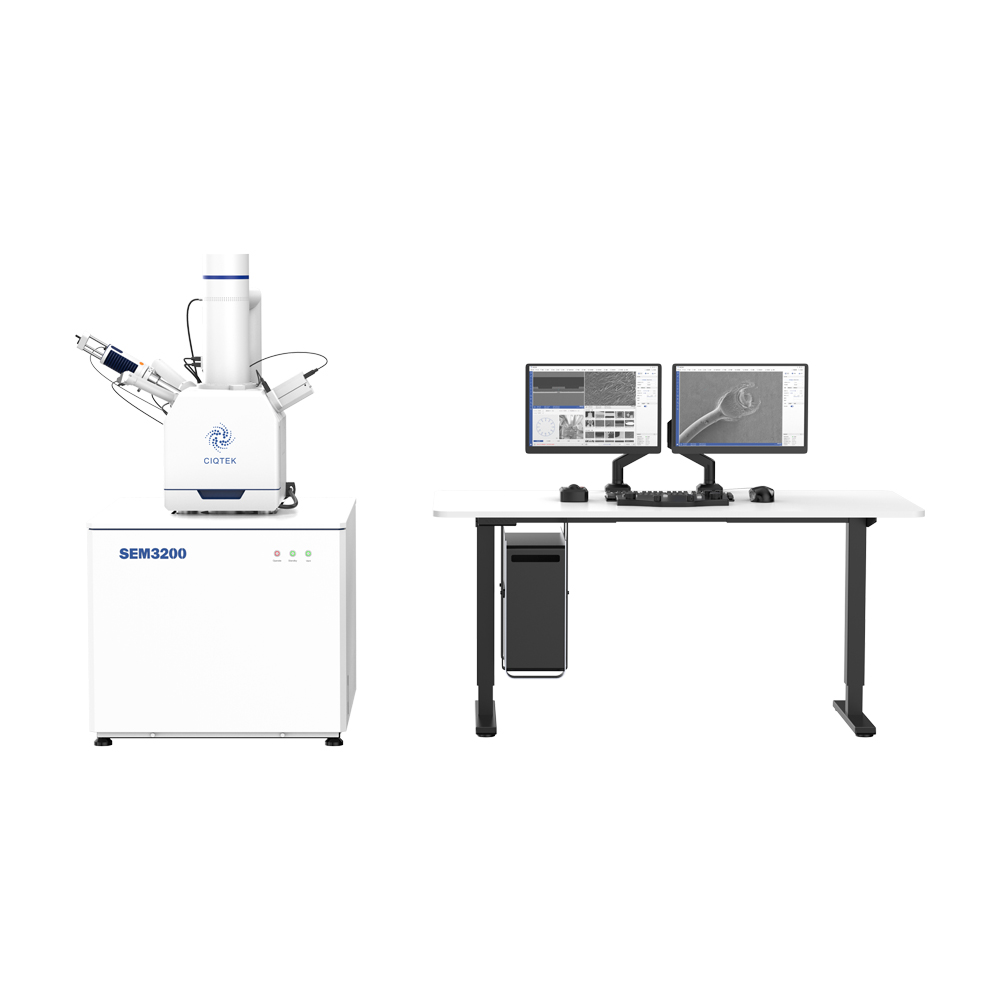Visualizing and Quantifying Porosity in 3D-Printed Bioactive Bone Scaffolds Using SEM Microscopes
- 1. Understanding the Role of Porosity in Bone Tissue Engineering3D-printed bioactive bone scaffolds play a critical role in bone tissue engineering, where porosity is a key parameter that influences cell adhesion, proliferation, nutrient transport, and new bone formation. Both excessively high and low porosity levels can negatively impact the scaffold’s mechanical stability and biological performance. Therefore, accurate porosity analysis of 3D-printed scaffolds is vital to improving design and optimizing regenerative outcomes. Scanning Electron Microscopy for Microstructural EvaluationThe CIQTEK SEM3200, a tungsten filament scanning electron microscope (SEM), provides high-resolution imaging capabilities for examining the internal structure of 3D-printed scaffolds. It reveals critical pore characteristics such as size, shape, interconnectivity, and distribution, offering visual clarity that is essential for reliable quantitative porosity analysis. Image-Based Porosity MeasurementUsing CIQTEK's advanced image analysis software, researchers can select representative scaffold regions in the SEM images and calculate the ratio of pore area to total area. This image-based approach provides precise porosity values, along with statistical measures such as average porosity and standard deviation, ensuring the uniformity and reproducibility of scaffold manufacturing. Correlating Printing Parameters with Scaffold PorositySEM3200 enables an in-depth investigation into how various 3D printing parameters, including printing speed, nozzle temperature, and material concentration, impact scaffold porosity. By correlating SEM-derived porosity data with manufacturing variables, researchers can fine-tune the fabrication process to enhance scaffold performance for specific biomedical applications. Why Choose CIQTEK SEM3200 for Porosity Evaluation High-Resolution SEM Imaging: Accurately captures micro-scale pore structures with excellent clarity. Reliable Measurement: Produces consistent, reproducible data suitable for scientific analysis and peer-reviewed publication. User-Friendly Operation: Intuitive interface with localized software reduces training time and increases throughput. Cost-Effective Performance: Delivers professional-grade results with an attractive price-to-performance ratio. Empowering Research in Bone Tissue EngineeringWith the CIQTEK SEM3200, universities, hospitals, and medtech innovators now have a dependable tool for characterizing the porosity of 3D-printed bioactive scaffolds. Whether your focus is on accelerating preclinical research or optimizing clinical-grade implants, this SEM solution enables deeper insights into scaffold structure, driving advancements in regenerative medicine and biomaterials development. Explore how scanning electron microscopy for 3D-printed scaffolds can enhance your research capabilities. Learn more about the CIQTEK SEM3200
- 2.
- 3. Scanning Electron Microscopy for Microstructural Evaluation
- 4.
- 5. Image-Based Porosity Measurement
- 6.
- 7. Correlating Printing Parameters with Scaffold Porosity
- 8.
- 9. Why Choose CIQTEK SEM3200 for Porosity Evaluation
- 10.
- 11. Empowering Research in Bone Tissue Engineering
Understanding the Role of Porosity in Bone Tissue Engineering
3D-printed bioactive bone scaffolds play a critical role in bone tissue engineering, where porosity is a key parameter that influences cell adhesion, proliferation, nutrient transport, and new bone formation. Both excessively high and low porosity levels can negatively impact the scaffold’s mechanical stability and biological performance. Therefore, accurate porosity analysis of 3D-printed scaffolds is vital to improving design and optimizing regenerative outcomes.
Scanning Electron Microscopy for Microstructural Evaluation
The CIQTEK SEM3200, a tungsten filament scanning electron microscope (SEM), provides high-resolution imaging capabilities for examining the internal structure of 3D-printed scaffolds. It reveals critical pore characteristics such as size, shape, interconnectivity, and distribution, offering visual clarity that is essential for reliable quantitative porosity analysis.
Image-Based Porosity Measurement
Using CIQTEK's advanced image analysis software, researchers can select representative scaffold regions in the SEM images and calculate the ratio of pore area to total area. This image-based approach provides precise porosity values, along with statistical measures such as average porosity and standard deviation, ensuring the uniformity and reproducibility of scaffold manufacturing.
Correlating Printing Parameters with Scaffold Porosity
SEM3200 enables an in-depth investigation into how various 3D printing parameters, including printing speed, nozzle temperature, and material concentration, impact scaffold porosity. By correlating SEM-derived porosity data with manufacturing variables, researchers can fine-tune the fabrication process to enhance scaffold performance for specific biomedical applications.
Why Choose CIQTEK SEM3200 for Porosity Evaluation
- High-Resolution SEM Imaging: Accurately captures micro-scale pore structures with excellent clarity.
- Reliable Measurement: Produces consistent, reproducible data suitable for scientific analysis and peer-reviewed publication.
- User-Friendly Operation: Intuitive interface with localized software reduces training time and increases throughput.
- Cost-Effective Performance: Delivers professional-grade results with an attractive price-to-performance ratio.
Empowering Research in Bone Tissue Engineering
With the CIQTEK SEM3200, universities, hospitals, and medtech innovators now have a dependable tool for characterizing the porosity of 3D-printed bioactive scaffolds. Whether your focus is on accelerating preclinical research or optimizing clinical-grade implants, this SEM solution enables deeper insights into scaffold structure, driving advancements in regenerative medicine and biomaterials development.
Explore how scanning electron microscopy for 3D-printed scaffolds can enhance your research capabilities. Learn more about the CIQTEK SEM3200

